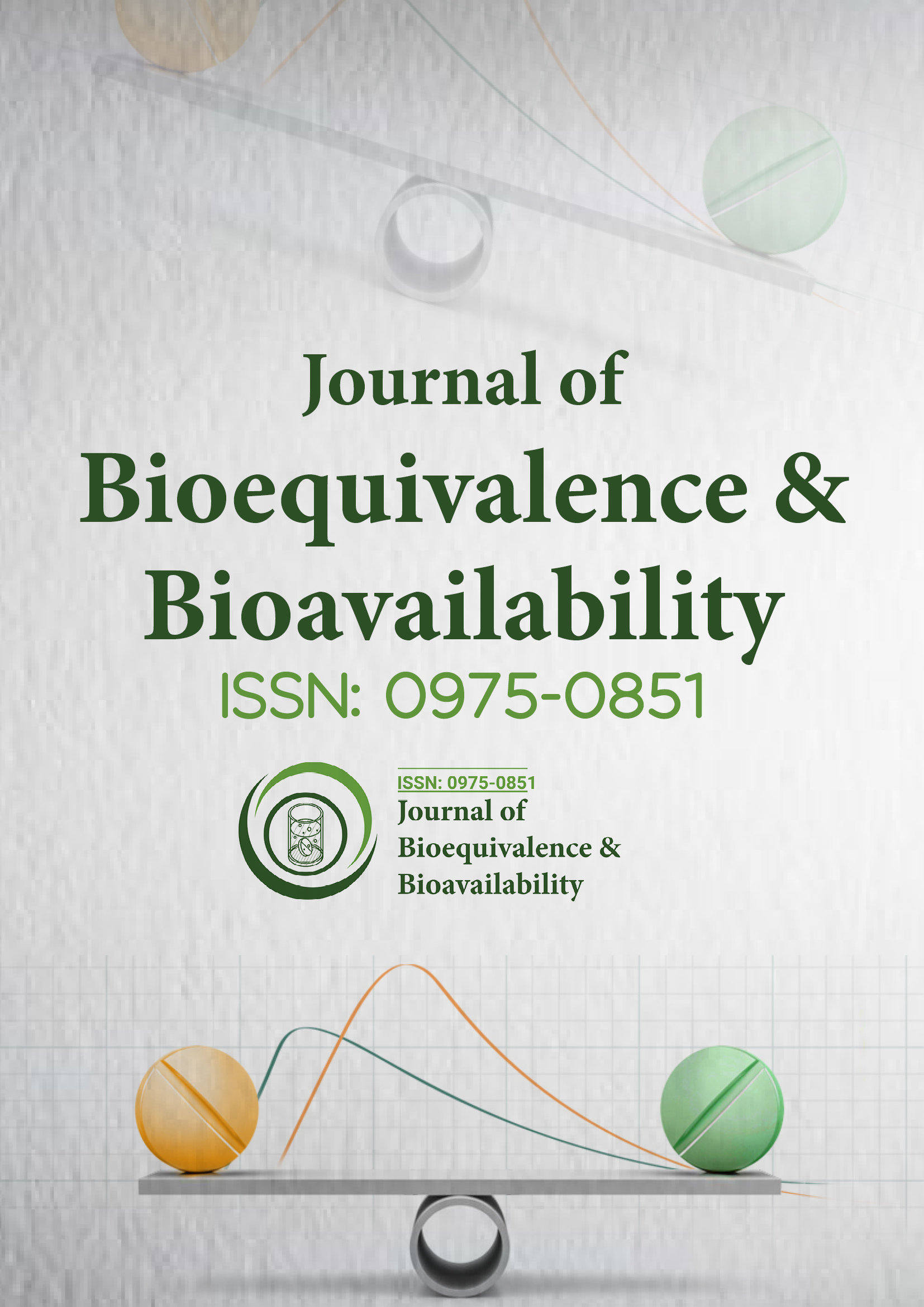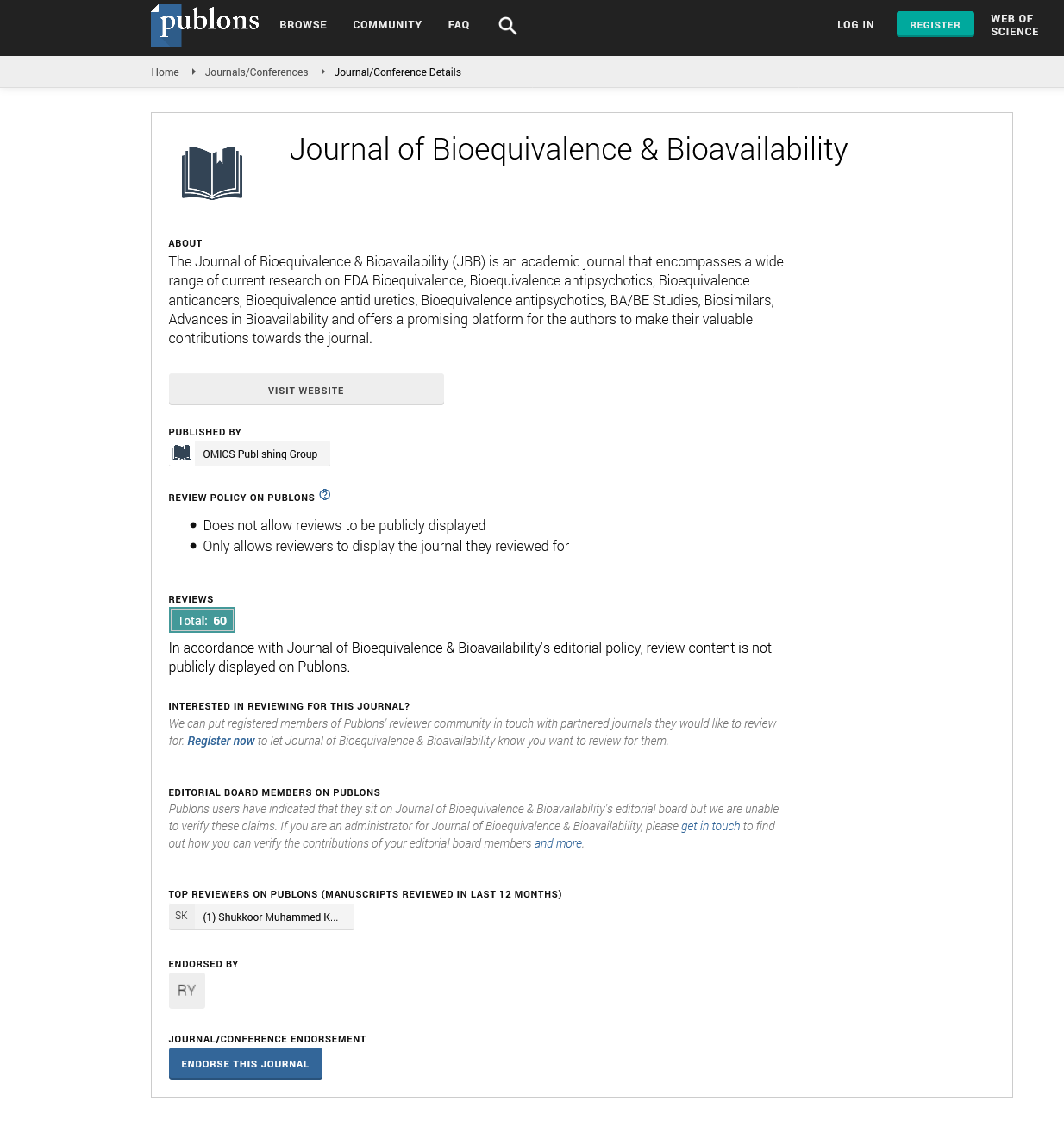Indexed In
- Academic Journals Database
- Open J Gate
- Genamics JournalSeek
- Academic Keys
- JournalTOCs
- China National Knowledge Infrastructure (CNKI)
- CiteFactor
- Scimago
- Ulrich's Periodicals Directory
- Electronic Journals Library
- RefSeek
- Hamdard University
- EBSCO A-Z
- OCLC- WorldCat
- SWB online catalog
- Virtual Library of Biology (vifabio)
- Publons
- MIAR
- University Grants Commission
- Geneva Foundation for Medical Education and Research
- Euro Pub
- Google Scholar
Useful Links
Share This Page
Journal Flyer

Open Access Journals
- Agri and Aquaculture
- Biochemistry
- Bioinformatics & Systems Biology
- Business & Management
- Chemistry
- Clinical Sciences
- Engineering
- Food & Nutrition
- General Science
- Genetics & Molecular Biology
- Immunology & Microbiology
- Medical Sciences
- Neuroscience & Psychology
- Nursing & Health Care
- Pharmaceutical Sciences
Commentary Article - (2025) Volume 17, Issue 2
Economic and Clinical Impact of Bioequivalent Antidiabetic Drugs in Chronic Disease Management
Natasha Greg*Received: 03-Apr-2025, Manuscript No. JBB-24-28983; Editor assigned: 07-Apr-2025, Pre QC No. JBB-24-28983 (PQ); Reviewed: 21-Apr-2025, QC No. JBB-24-28983; Revised: 28-Apr-2025, Manuscript No. JBB-24-28983 (R); Published: 05-May-2025, DOI: 10.35248/0975-0851.25.17.630
Description
Bioequivalence in antidiabetic medications plays a pivotal role in ensuring the safety, efficacy, and accessibility of treatment options for millions of patients worldwide. Diabetes mellitus, both Type 1 and Type 2, requires long-term pharmacological management, and the introduction of generic formulations has enabled significant cost savings while maintaining therapeutic standards. For generic drugs to gain regulatory approval, demonstrating bioequivalence to the reference listed drug is essential. This requirement becomes particularly crucial in the case of antidiabetic medications due to the narrow therapeutic index, pharmacokinetic complexity, and the need for sustained glycemic control.
The fundamental principle of bioequivalence lies in showing that the generic version of a drug exhibits no significant difference in the rate and extent of absorption when compared to the innovator product. For antidiabetics, which often include classes such as sulfonylureas, biguanides, DPP-4 inhibitors, GLP-1 receptor agonists, SGLT2 inhibitors, and insulin analogues, even minor deviations in bioavailability could lead to therapeutic failures or adverse effects. As such, the pharmacokinetic parameters such as Cmax, tmax, and AUC are rigorously evaluated in healthy volunteers or in certain cases, in patients with stable disease conditions.
Metformin, one of the most widely used antidiabetic drugs, is a benchmark for generic formulations. The Extended-Release (ER) formulations pose additional challenges in establishing bioequivalence due to variable gastric emptying and patient-specific gastrointestinal conditions. Bioequivalence studies for ER metformin must consider the site-specific absorption and controlled release profiles. Regulatory agencies such as the US FDA and EMA provide specific guidance on study design, including fed and fasting conditions, crossover design, and washout periods, ensuring consistency in evaluation. Moreover, population pharmacokinetic modeling and In Vitro-In Vivo Correlation (IVIVC) studies are often employed to support the equivalence claims, particularly for modified-release formulations.
Another significant aspect arises in the case of insulin biosimilars. Unlike small molecule generics, biosimilars of insulin require not just pharmacokinetic and pharmacodynamic comparisons, but also immunogenicity assessments and sometimes even confirmatory clinical trials. The complex structure of insulin and its analogues like insulin glargine, lispro, and detemir necessitates a comprehensive comparability exercise. Although regulatory pathways for biosimilars are distinct, the concept of bioequivalence underpins the comparative evaluation of exposure and activity.
DPP-4 inhibitors, such as sitagliptin and saxagliptin, represent a newer class of antidiabetic agents with once-daily dosing and a relatively wide therapeutic index. These agents undergo extensive bioequivalence testing to ensure the systemic exposure of generics matches that of the innovator. Given their renal clearance and potential for interaction with other medications, it is imperative that generics maintain consistent pharmacokinetic profiles to prevent fluctuations in glycemic control.
For Fixed-Dose Combinations (FDCs) like metformin with glibenclamide or sitagliptin, the bioequivalence assessment becomes even more intricate. Each component must be evaluated independently and collectively to ensure therapeutic parity. Regulatory guidelines recommend that the test product meet the predefined bioequivalence criteria for each active moiety under both fasting and fed conditions. The presence of food can significantly alter the absorption of certain antidiabetics, necessitating a thorough evaluation of postprandial pharmacokinetics.
Patient adherence and acceptance of generic antidiabetics hinge on trust in their efficacy and safety. Reports of perceived differences in therapeutic outcomes with generics can often be traced to psychological factors or minor pharmacokinetic variances within the accepted limits. Hence, pharmacovigilance and real-world evidence play a crucial role in reinforcing confidence in bioequivalent generics. Post-marketing surveillance and adverse event reporting systems help identify any deviations in expected clinical outcomes, prompting further investigation or corrective action.
The economic implications of bioequivalent antidiabetic medications are profound. With diabetes being a chronic condition requiring lifelong management, the availability of cost-effective generics alleviates the financial burden on healthcare systems and patients. This becomes particularly relevant in low- and middle-income countries where access to branded medications may be limited. Bioequivalence ensures that the therapeutic benefits of branded medications can be extended through generics without compromising quality.
Despite the stringent regulatory oversight, challenges persist in the development and approval of bioequivalent antidiabetic drugs. Formulation complexity, inter-subject variability, and the influence of comorbidities on drug absorption present hurdles in designing robust bioequivalence studies. Advanced analytical techniques, modeling and simulation tools, and biostatistical methods are increasingly employed to navigate these challenges. Moreover, continuous dialogue between regulatory authorities, industry stakeholders, and academia fosters innovation in study designs and methodologies.
In conclusion, bioequivalence in antidiabetics serves as the cornerstone for the safe and effective use of generic medications in diabetes management. As the therapeutic landscape evolves with new drug classes and complex formulations, the standards for demonstrating bioequivalence must adapt accordingly. Regulatory harmonization, scientific advancements, and stakeholder collaboration will drive the continued success of bioequivalent antidiabetic therapies, ensuring wider access to quality healthcare globally.
Citation: Greg N (2025). Economic and Clinical Impact of Bioequivalent Antidiabetic Drugs in Chronic Disease Management. J Bioequiv Availab.17:630.
Copyright: © 2025 Greg N. This is an open-access article distributed under the terms of the Creative Commons Attribution License, which permits unrestricted use, distribution, and reproduction in any medium, provided the original author and source are credited.

